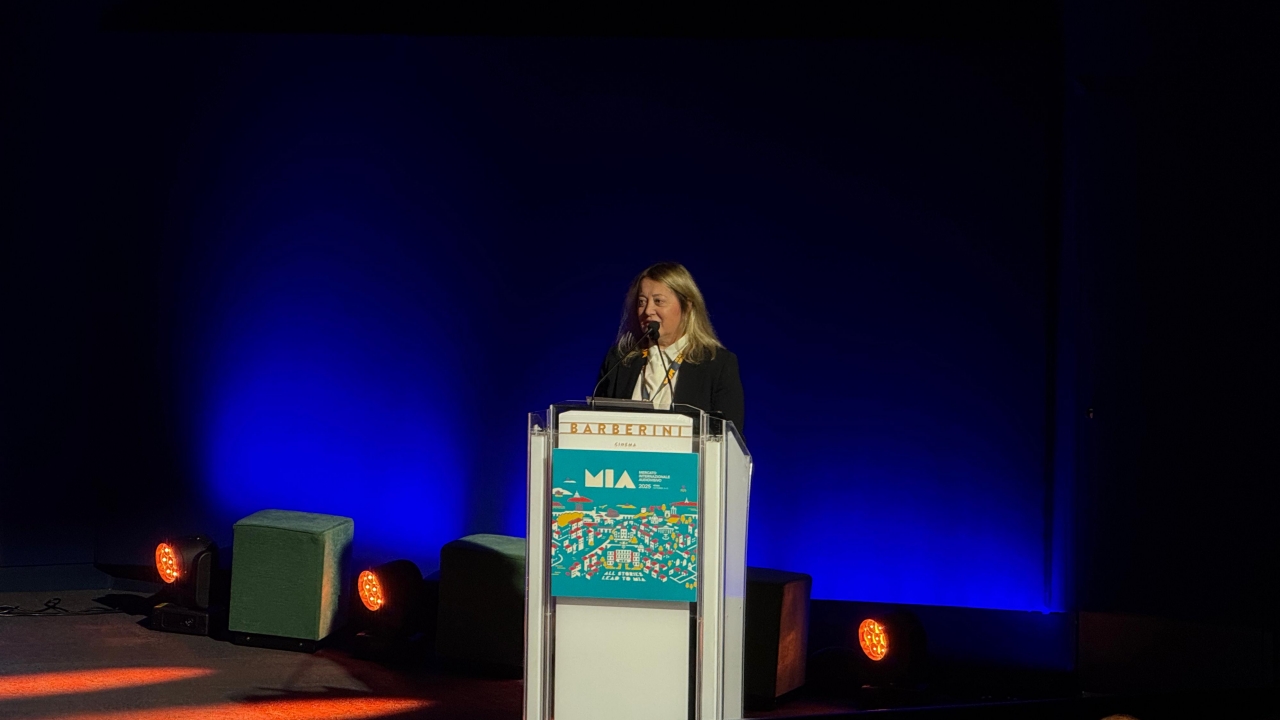Today, during the eleventh edition of MIA | Mercato Internazionale dell’Audiovisivo, the “7th Report on National Audiovisual Production” was presented by Chiara Sbarigia, President of APA – Italian Audiovisual Producers Association. The panel provides an updated overview of the sector’s economic and employment values, analyzing the production and creative trends that characterize the 2024-2025 period.
“We are particularly pleased to share these data because they highlight a growth in market resources attracted to the national audiovisual sector. Linear television remains the primary audiovisual medium in 2024, accounting for 52% of the sector. Investments in TV are also growing (+7%), while online video continues to maintain a stable growth rate of 15%. The only segment that remains flat is cinema exhibition,” explained Chiara Sbarigia, emphasizing the market’s solidity: “The decade 2015-2024 was marked by a significant wave of mergers among production companies, which has now come to a halt”.
According to Sbarigia: “The growth in demand and the use of tax credits alone will not have the same expansive effect on the sector. To consolidate the market, it is necessary to focus on a more selective approach to projects, with a strong emphasis on product quality”.
Regarding the 2024-2025 season, Sbarigia noted a significant increase in unscripted content, driven mainly by in-house production: “Titles are increasing mostly thanks to in-house production, which represents a substantial part of our overall offering”.
On the fiction side, the sector is entering a phase of stabilization after the peaks of recent years: “Fiction audiences are performing very well: renewals and period miniseries bring excellent results. International co-productions remain a fundamental part of the offering. In addition, teen content is holding up and period drama continues to consolidate, with France as one of our key partners”.
Finally, Sbarigia highlighted the resurgence of independent production, commenting on the dynamic between internal and external production: “Independent production is growing again. External titles are increasing, while internal production shows a slight decline. The sector remains highly fragmented, but this also represents an opportunity to stimulate creativity and diversity of content”.
The panel then brought together some of the sector’s leading figures, who shared their reflections on the market, content quality, and strategies to promote Italian audiovisual production internationally.
On the topic of combining production and narrative value, Maria Pia Ammirati, Rai Fiction Director, emphasized: “Quality must go hand in hand with quantity. Each title must have its own life and capacity to express quality. Our work is always evolving, because we constantly need to think about what comes next”.
Regarding the challenges of finding authors and screenwriters for the domestic market, Daniele Cesarano, Mediaset Fiction Director, explained: “Quality is a very slippery term. Today we often have to do remakes because it is difficult to find talents who can write with the DNA of Mediaset fiction, that maximalist energy of emotions”.
Speaking about the platform’s strategy, Eleonora Andreatta, Vice President, Italian Content, Netflix, stressed: “For us, it is essential to produce content rooted in Italian identity, yet able to speak to a contemporary audience. The production care, both in front of and behind the camera, is what makes the content appealing even abroad”.
On the quality of talent and the impact of new technologies, Nils Hartmann, Executive Vice President for Sky Studios Italia, added: “The quality of Italian producers and talent is indisputable. Two key aspects are communicating quality and considering the impact of artificial intelligence on production and creative content”.
Finally, regarding the international approach and audience engagement, Viktoria Wasilewski, Country Manager at Prime Video Italy, explained: “At Amazon, it is the audience perspective that guides the pursuit of quality. We experiment with scripted and comedy, optimizing resources while maintaining international ambition, because we want to create content that is attractive even outside Italy”.
Concluding the panel, Chiara Sbarigia emphasized the key role of public support and system stability: “The aid system must ensure rigor, speed, and predictability in allocations, supporting independent production and the pursuit of quality. Only in this way can the sector face the challenges of this new market phase,” highlighting the evolution of Italian producers over the last decade: “Our producers have gained awareness, skills, and a strong capacity for innovation. They bring creative and high-level proposals to commissioners, aiming to strengthen the competitiveness of Italian audiovisual production internationally”.

